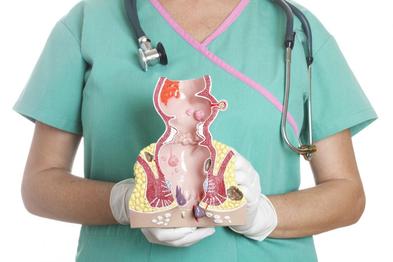Second Medical Opinion
Trust & Confidence
+91 8150000200
Book Appointment
Mon - Sat: 9:00 - 20:30
Appointment timing
Trust & Confidence
Book Appointment
Appointment timing
Laser proctology is the surgical treatment of diseases of the colon, rectum, and anus using a laser. Common conditions treated with laser proctology include hemorrhoids, fissures, fistula, pilonidal sinus, and polyps. The technique is increasingly being used to treat piles in both women and men.
Laser (Light Amplification by Stimulated Radiation) is a light beam of high energy. This light beam is used to burn or cut the abnormality, which was the reason for the surgery. Present, laser techniques are very advanced and much safer; they leave no scars, are bloodless and less painful. They also cause lesser complications.

Laser Surgery Vs Conventional Surgery
Laser surgery is an outpatient or day-care procedure, which offers many advantages over conventional surgery. For e.g., the laser technique not only treats hemorrhoids more effectively, but it also reduces post-operative pain. It also improves symptoms after surgeries, which were not meant to completely cure the patient. Similar results have been seen in patients external thrombosis, severe anal spasms, fissure, fistula, varicose veins, and sentinel tags. Specific advantages of laser surgery are:
Anorectal Diseases That Require Laser Surgery
Hemorrhoids or Piles are enlarged veins located at the junction of the anus and rectum. The veins get enlarged due to excessive blood flow in arteries, which in turn causes the haemorrhoidal plexuses to dilate and get congested.
Anorectal Fissures
The lining of the anus can tear or crack when passing large or hard stools. The tear is called anal fissure and leads to pain and bleeding while passing stool.
Anal Fistula
Anal fistulas are small, infected connections that form between the skin near the anus and end of the bowel. An anal fistula is mostly the result of contagion in an anal gland, which spreads to the skin.
Pilonidal Cyst
Pilonidal cysts are formed at the end of the tailbone and just above the sacrum when hair penetrates the skin. The cysts also contain skin debris. The body responds to the hair as a foreign substance and creates a sac around the hair. If the cyst and the overlying skin become infected, it can lead to a painful abscess.
Symptoms of Anorectal Diseases
Many anorectal medical conditions go undiagnosed and remain untreated in adults because people feel shy or embarrassed to bring it to the notice of a doctor. This is especially true of women. The symptoms of anorectal conditions are noticeable, and should immediately be brought to the attention of a medical practitioner. Early diagnosis leads to lessening discomfort and faster treatment. Some of the symptoms are:
Ø Rectal pain and bleeding
Ø Pain, strain or bleeding while passing stool
Ø Inability to sit for long periods
Ø Spotting blood
Laser Surgeries for Piles
There are three types of laser surgeries for hemorrhoids:
Hemorrhoidal Laser Procedure (HeLp)
HeLP is a minimally-invasive laser procedure for piles, which does not require anesthesia. A Doppler is used to identify the affected branches of the rectal artery. Once they have been identified, a laser diode fiber photocoagulation the branches.
Laser Hemorrhoidoplasty (LHP)
LHP is similar to HeLP, but in this surgery, blood is stopped from flowing to the hemorrhoidal plexus by photocoagulating the affected branches of the rectal artery.
Laser Haemorrhoidectomy
Also called laser cauterization, this is a procedure in which the surgeon shrinks the swollen piles by burning them with the laser. Sometimes, the surgeon used a narrow laser beam and focus only on the hemorrhoids to avoid damage to nearby tissues. The narrow beam is passed through the anus and focussed on the mass of the piles. The controlled exposure of the submucosa zone to the energy of the laser causes a mass to shrink.
The fibrosis is reconstructed to create connecting tissue. This enables the mucosa to adhere to the underlying tissue. This prevents prolapsed. This is a safe surgery and cause minimal bleeding and heals faster.
FILAC Technique (Fistula–Tract Laser Closure)
This is a minimally-invasive technique to treat anorectal fistula, which preserves the sphincter. The affected tissue, called epithelialized is neutralized by focusing the laser in a controlled, circular movement.
Lateral Internal Sphincterotomy (LIS)
Doctors may prescribe LIS when chronic anal fissure does not respond to medication and conventional treatments. The laser is used to remove a small portion of the sphincter muscle. This helps alleviate pressure, reduce pain and allows the fissure to heal.
What to Expect With Laser Proctology Surgeries
Before the Surgery: Your doctor or surgeon will explain the entire procedure to you and the expected results. The medical team will give you specific instructions on what to do and what not to do before the surgery. They will also conduct some pre-operative examinations.
During Surgery: The surgery will be carried out by a team of anesthetists, the surgeon and support staff. The procedure will be carried out under local anesthesia. Depending on the condition, the operation lasts from a few minutes to one hour.
After Surgery: Laser proctology surgeries are usually conducted as out-patient procedures, but some patients may be monitored overnight. The time of recovery varies from patient to patient, but you can expect to resume normal activities in one or two days
Dr. Manas Ranjan Tripathy has achieved acclaim in proctology. His areas of expertise are sophisticated minimally invasive laser surgeries for Hemorrhoids or piles, anal fissures, anal fistulas with special expertise in laser Hemorrhoidopexy and recurrent and complex fistulas.